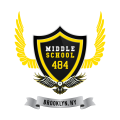Special Education
All students with disabilities who require special education services have Individualized Education Programs (IEPs). The IEP contains information about your child’s interests, strengths, needs, goals, and educational program. It is a legal document that describes how the DOE will provide your child:
■ A Free and Appropriate Public Education (FAPE)
■ In the Least Restrictive Environment (LRE).
Find Out More
Where Do Students with IEPs Attend School?
Students with IEPs participate in the same admissions processes as their non- disabled peers. All schools serve students with disabilities. That’s because special education is not a class or a place. Rather, it describes a wide range of services that can be provided in a variety of school settings. Most students with IEPs attend their zoned or district school. Some attend specialized programs in district schools and others require the support of a District 75 program or an accessible school building. The IEP team will conduct evaluations to determine which school setting will best support your child in reaching his or her academic goals.
Wherever your child attends school, know that school staff are trained to develop high quality IEPs, educate students with different needs, and create inclusive schools where students with and without disabilities share one school community.
Continuum of Services
There is an array of services available to support your child in his or her least restrictive environment. There must be a clear justification anytime a student is removed from the general education setting. Here is a list of the service recommendations that the Individualized Education Program (IEP) team may consider for your child:
General Education
Your child will be educated in the same classroom as non-disabled peers.
General Education with Related Services
Your child will be educated in the same classroom as non-disabled peers. He or she will receive related services, such as physical therapy or counseling, in the classroom or in a separate location:
General Education with Special Education Teacher Support Services
Your child will be educated in the same classroom as non-disabled peers. He or she will receive direct or indirect Special Education Teacher Support Services (SETSS) from a special education teacher. Your child’s IEP may recommend:
■ Direct SETSS
■ Indirect SETTS
■ A combination of the two
Direct SETSS
A special education teacher provides specially designed instruction part-time to a group of up to eight children. This may be in the general education classroom or somewhere else in the school.
Indirect SETSS
A special education teacher works with the general education classroom teacher
to:
■ Adjust the learning environment
■ Modify instruction to meet students’ needs
Integrated Co-Teaching Services (full or part-time)
Classrooms with Integrated Co-Teaching (ICT) services include students with IEPs and students without IEPs. No more than 12 (or 40 percent) of the students in the class can have IEPs. There are two teachers—a general education teacher and a special education
teacher. The teachers work together to adapt materials and modify instruction to make sure the entire class can participate.
Special Class Services (full or part-time)
Special Class (SC) services are provided in a self-contained classroom. All of the children in the class have IEPs with needs that cannot be met in a general education classroom. They are taught by special education teachers who provide specialized instruction. In elementary and middle school, special classes have up to 12 students. In high school, special classes have up to 15 students. The students in the class are within a three-year age range and have similar educational needs.
District 75 Specialized Programs
District 75 provides highly specialized instructional support for students with significant challenges in a wide variety of settings and locations around NYC.
Day and Residential Placement
Day and residential programs are available in New York State-Approved Non- Public Schools and New York State-Supported Schools. Placement in these schools is considered for students with intensive educational needs that cannot be met in public school programs.
Home and Hospital Instruction
These are temporary educational services provided to students who cannot attend school due to:
■ A medical or physical condition; or
■ A severe emotional or psychological disability.
Other Services
Your child may also require assistive technology or other supplementary aids and services.
Find Out More
■ Other Educational Settings
■ Other Special Education Services
■ Assistive Technology

